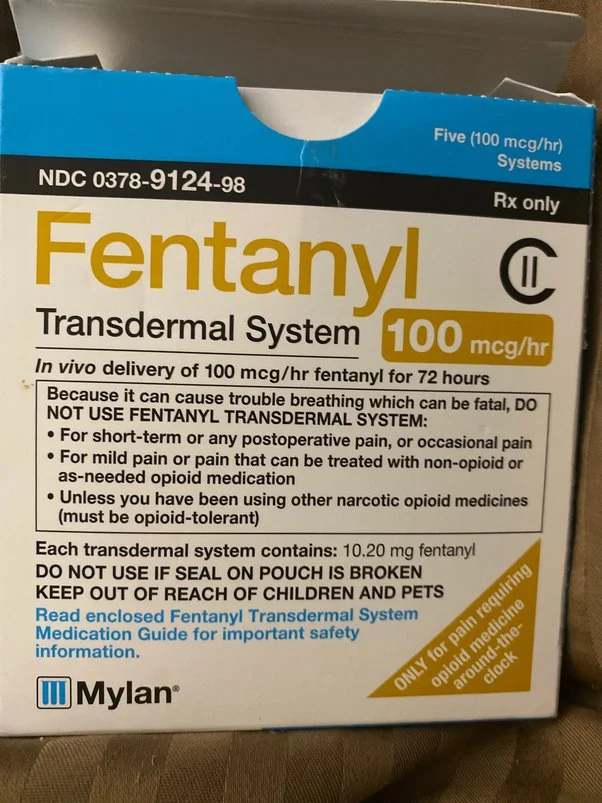Fentanyl is a powerful synthetic opioid used for pain management, particularly in patients with severe pain or those who require long-term pain relief. The transdermal system delivers fentanyl through the skin, providing a steady release of medication over an extended period. This article explores the indications, mechanism of action, benefits, potential risks, and important considerations for using the fentanyl transdermal system.
What is Fentanyl?
Fentanyl is a potent opioid analgesic, significantly stronger than morphine. It is commonly prescribed for patients experiencing chronic pain, especially those who have developed a tolerance to other opioid medications. The 100 mcg/hr transdermal patch is typically used in patients requiring higher doses of opioids for pain management.
How Does the Fentanyl Transdermal System Work?
The fentanyl transdermal patch works by releasing fentanyl through the skin into the bloodstream. Here’s how it functions:
- Transdermal Delivery: The patch adheres to the skin and gradually releases fentanyl over 72 hours, providing continuous pain relief without the need for frequent dosing.
- Steady Plasma Levels: This method allows for stable plasma concentrations of fentanyl, minimizing peaks and troughs that can occur with oral or injectable opioids.
- Patient Compliance: The long duration of action helps improve patient compliance, as users do not have to remember to take medication multiple times a day.
Indications for Use
The fentanyl transdermal system is indicated for:
- Chronic Pain Management: Suitable for patients with chronic pain conditions who require long-term opioid therapy.
- Cancer Pain: Often prescribed for cancer patients experiencing severe pain that cannot be adequately managed with non-opioid analgesics.
- Post-Surgical Pain: May be utilized for pain relief following major surgical procedures when long-lasting pain control is needed.
Benefits of the Fentanyl Transdermal System
- Ease of Use: The patch is simple to apply and can be worn discreetly under clothing, making it convenient for patients.
- Consistent Pain Control: By providing a continuous release of medication, the fentanyl patch helps maintain stable pain control throughout the day.
- Reduced Need for Frequent Dosing: Patients do not need to remember to take multiple doses, reducing the risk of missed doses and potential withdrawal symptoms.
- Lower Gastrointestinal Side Effects: Since it bypasses the gastrointestinal tract, the transdermal system may result in fewer gastrointestinal side effects compared to oral opioids.
Potential Risks and Side Effects
While effective for pain management, fentanyl carries significant risks, especially if not used correctly. Potential side effects include:
- Respiratory Depression: Fentanyl can cause severe respiratory depression, especially in opioid-naïve patients or when used in conjunction with other central nervous system depressants.
- Sedation and Drowsiness: Users may experience sedation, dizziness, or drowsiness, which can impair their ability to perform tasks that require alertness.
- Nausea and Vomiting: Some patients may experience nausea, although this can vary.
- Skin Reactions: The patch may cause local skin reactions, including redness, itching, or rash.
- Dependence and Addiction: Long-term use of fentanyl can lead to physical dependence and, in some cases, addiction.
Important Considerations
- Proper Application: Ensure that the skin is clean, dry, and free of hair at the application site. The patch should be applied to a non-irritated area of skin.
- Avoid Heat Exposure: Heat can increase the release of fentanyl from the patch, leading to overdose. Patients should avoid hot baths, heating pads, or prolonged exposure to sunlight on the patch area.
- Disposal: Used patches should be folded in half with the sticky sides together and disposed of safely to prevent accidental exposure to others.
- Monitor for Side Effects: Patients should be closely monitored for signs of respiratory depression, especially after the first dose or when dosage adjustments are made.
- Consult Healthcare Providers: Always communicate with healthcare providers regarding any changes in pain, side effects, or concerns related to fentanyl use.
Conclusion
The fentanyl 100 mcg/hr transdermal system is a valuable tool for managing severe pain in patients who require long-term opioid therapy. With its ease of use and ability to provide consistent pain relief, it can significantly improve the quality of life for those suffering from chronic pain conditions. However, it is essential to approach fentanyl with caution due to its potential risks, including respiratory depression and dependence.
Patients should work closely with healthcare providers to ensure safe and effective use of the fentanyl transdermal patch, making it a part of a comprehensive pain management plan tailored to individual needs.
Hey, Molar is the voice behind this all-encompassing blog, sharing expert insights and practical advice on business, real estate, and more. Dedicated to helping you navigate the complexities of these fields, Kelly provides the latest trends, in-depth analyses, and creative strategies to elevate your ventures.
